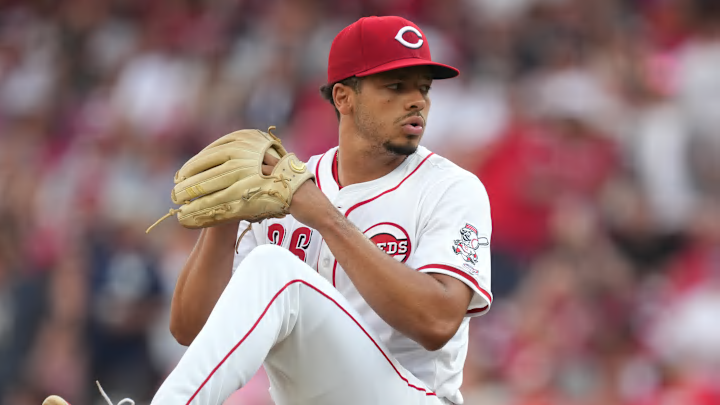Tuesday night was an exciting one for the Cincinnati Reds faithful as their top prospect and second-overall pick from last year's draft, Chase Burns, made his his big league debut. The start to Burns's professional career has been dynamite to say the least, and it only got better in his debut against the American League East-leading New York Yankees.
Coming out of college, it was apparent that Burns would be a pitcher that could move fast through the Reds system, but I'm not sure anyone forecasted just how good he has been thus far. He opened the season with High-A Dayton where he made three starts before earning a promotion to Double-A Chattanooga where he made eight starts.
Following two starts with Triple-A Louisville, there wasn't much of a reason to not let him take a shot at some big league hitters. In 66 innings across 13 starts in the minors, Burns posted a 1.77 ERA and a 36.8 strikeout rate — truly dominant stuff from the 22 year old Wake Forest product.
Reds rookie Chase Burns flashed elite fastball in MLB debut vs. Yankees
The calling card for Burns as a draft prospect, and now a legitimate top pitching prospect, is the nasty fastball and slider combination. Those are his two main offerings and he actually hardly ever throws anything else because of how dominant those two pitches are. However, that was the question mark concerning Burns upon his entrance into the organization. He would likely have to develop an offering he can use roughly 10% of the time to keep hitters guessing.
The good news for Burns in his debut last night was that he established the fastball and slider early on with conviction. The fastball touched 100 mph twice, both of which came in the first inning. For the most part, the fastball was working in the upper-90s, and averaged 98 mph. Fastball command was another question mark on Burns's profile as he had a home run problem with it in college and sometimes had a hard time landing it in the zone.
In his outing last night that was far from the case. He was filling up the strike zone with the fastball, mostly in the upper-third of the zone, and when he was missing, it was mostly above the zone. The few times he got beat on his fastball was when he left it at the bottom of the zone. His higher release height and steeper approach angle makes it easier for hitters to drop the barrel on a low fastball which is why it's so important for him to land it up in the zone.
Top Reds prospect Chase Burns also employed a wicked slider during his MLB vs. the Yankees
As expected, his slider was his premier pitch. He threw it 30% of the time, yielding six whiffs and a 60% chase rate. The first one he threw came in at 93.4 mph at Trent Grisham's back foot for his first strikeout of the night. That is the pitch that gives him the upside of an ace. If he can use the fastball to get into a lot of two-strike counts, the slider is going to be a nightmare for hitters. He was throwing it in any count and to different quadrants of the zone to earn both called strikes and whiffs. He made one mistake with it, leaving one hanging to Ben Rice who crushed it for a solo home run.
He did in fact throw his changeup 10% of the time, but exclusively to lefties. Six of the eight that he threw landed for strikes, showing that he does indeed have feel for that pitch and can be a difference-maker for him moving forward.
It's rare that a starter can find success from only two pitches, no matter how good they are. Even his new rotation-mate, Hunter Greene, throws a splitter to offset his elite fastball and slider. Although it's a small sample size, what Burns showed with the changeup last night was very promising.
Although the Yankees lineup tagged him for three runs across five innings, Burns gave Reds fans a lot to dream on. The electricity of his arsenal, paired with his newfound pitch-ability and above-average command lay very solid groundwork for his success as a rookie moving forward.
